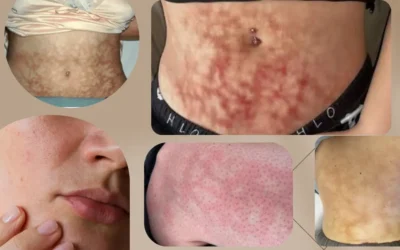Damaged skin can be a source of frustration and concern for many individuals.
Whether it’s from sun exposure, environmental factors, or certain skincare practices, skin damage can manifest as dryness, redness, uneven texture, or even more severe conditions like scars and hyperpigmentation.
In this detailed guide, we will explore effective strategies and techniques to repair and rejuvenate damaged skin. By following these steps and incorporating targeted skincare products, you can embark on a journey towards healthier, radiant skin.
Understanding the Causes of Skin Damage
Before diving into the solutions, it’s important to understand the common causes of skin damage. This knowledge will help you identify the underlying factors contributing to your specific skin concerns and tailor your approach accordingly. Some key factors include:
UV Exposure: Prolonged exposure to the sun’s harmful UV rays can lead to sunburn, premature aging, and an increased risk of skin cancer.
Environmental Factors: Pollution, harsh weather conditions, and airborne toxins can damage the skin’s protective barrier and accelerate the aging process.
Improper Skincare: Using harsh or abrasive skincare products, over-exfoliating, or not following a proper skincare routine can disrupt the skin’s balance and cause irritation.
Unhealthy Lifestyle Habits: Poor diet, lack of sleep, excessive alcohol consumption, and smoking can negatively impact skin health and contribute to damage.
Step-by-Step Guide to Repair Damaged Skin
Assess the Damage
Begin by assessing the extent of the damage and identifying your specific skin concerns. Take note of any visible signs of damage, such as dryness, redness, or pigmentation irregularities.
This assessment will guide you in choosing the most appropriate treatment methods and products.
Cleanse Gently
Use a gentle cleanser that suits your skin type to avoid further irritation. Look for cleansers with soothing ingredients like aloe vera, chamomile, or green tea. Avoid hot water and opt for lukewarm water instead, as hot water can strip the skin of its natural oils.
Exfoliate Regularly
Exfoliation is crucial for removing dead skin cells and promoting cell turnover. Choose a gentle exfoliator with ingredients like glycolic acid or salicylic acid to slough off dull, damaged skin.
However, be mindful not to over-exfoliate, as it can lead to irritation and further damage.
Repair with Antioxidants
Antioxidants play a vital role in repairing damaged skin and protecting it from further harm. Look for skincare products rich in antioxidants like vitamin C, vitamin E, green tea extract, or resveratrol.
These ingredients help neutralize free radicals, reduce inflammation, and promote skin rejuvenation.
Hydrate and Moisturize
Hydration is key to repairing damaged skin. Opt for a hydrating serum or moisturizer that contains ingredients like hyaluronic acid, ceramides, or niacinamide. These ingredients help restore the skin’s moisture barrier, improve elasticity, and enhance overall skin texture.
Targeted Treatments
For specific skin concerns such as acne scars, hyperpigmentation, or fine lines, consider incorporating targeted treatments into your routine. Products containing retinol, alpha hydroxy acids (AHAs), or peptides can help address these issues and promote skin repair.
Protect with SPF
To prevent further damage and protect your newly repaired skin, apply a broad-spectrum sunscreen with at least SPF 30 daily. Sunscreen acts as a shield against harmful UV rays and helps maintain the integrity of the skin.
Additional Tips for Skin Repair
Stay Hydrated: Drink plenty of water to keep your skin hydrated from within.
Follow a Healthy Diet: Incorporate fruits, vegetables, and foods rich in omega-3 fatty acids to support skin health.
Get Sufficient Sleep: Aim for 7-8 hours of quality sleep each night to allow your skin to repair and regenerate.
Manage Stress: Chronic stress can contribute to skin damage, so practice stress-reducing activities like meditation or yoga.
Avoid Harsh Chemicals: Read ingredient labels and avoid skincare products that contain harsh chemicals or irritants.
Seeking Professional Help
If you have severe or persistent skin damage, it may be beneficial to consult with a dermatologist or skincare professional.
They can provide personalized advice, recommend professional treatments like chemical peels or laser therapy, and suggest prescription-strength skincare products if necessary.
Conclusion
Repairing damaged skin is a gradual process that requires consistency, patience, and the right skincare approach. By following the steps outlined in this guide and adopting a holistic approach to skincare, you can restore and rejuvenate your skin.
Remember to be gentle, hydrate, protect from the sun, and seek professional help if needed. Embrace the journey of skin repair and enjoy the rewards of a healthier, more vibrant complexion.


